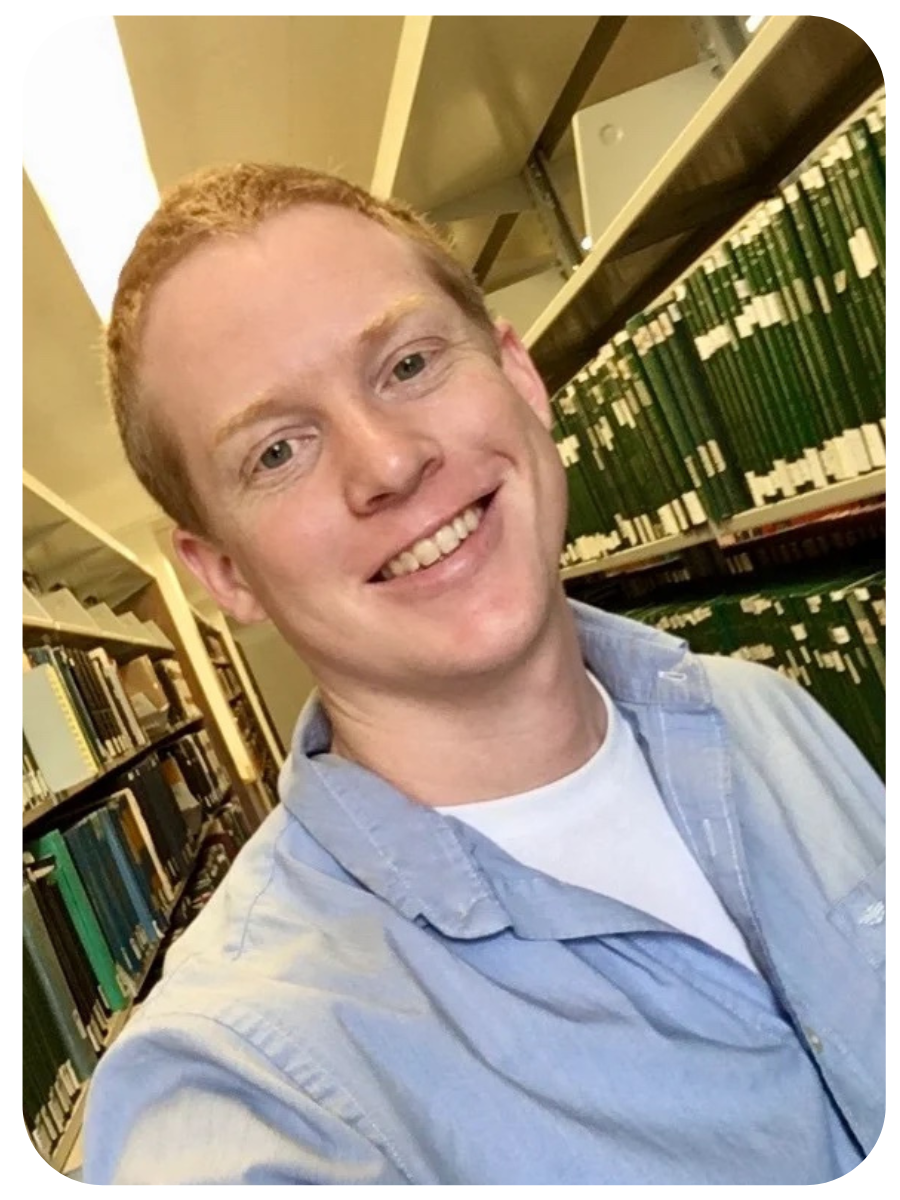Dr. James Hickman, Assistant Teaching Professor

Who had the greatest influence on your education and/or career path?
Many of my beliefs concerning teaching and mentorship stem from my experience as a graduate student. During that time, I was incredibly fortunate to work with Professor Mishin as my Ph.D. advisor at George Mason University. I genuinely believe I couldn’t have asked for a better mentor. I certainly wouldn’t be where I am today without his exceptional guidance, and I’m extremely grateful for the opportunity to work with him. He demonstrated the importance of intellectual rigor, hard work and discipline, a commitment to high-quality research standards, and, of course, patience for the student’s progress. Furthermore, his extensive knowledge of the current state of academic literature enabled him to select realistic projects for his students that, when completed, were publishable in high-quality journals.
With your background in physics, what drew you to data science?
Several factors have shaped my current career trajectory. Broadly speaking, my research falls under the umbrella of computational condensed matter physics, with an emphasis on atomistic modeling and the relationship between crystalline defects and material properties. As a computational physicist, I applied mathematical models and algorithms to simulate physical phenomena, advancing scientific understanding through computer-based analyses. The work draws heavily from thermodynamics, quantum mechanics, solid-state physics, and materials science. It is also interdisciplinary, requiring expertise in various sub-fields of applied mathematics, machine learning, data science, high-performance computing, statistics, and computer science. The simulations I conducted generated substantial amounts of data, all of which needed to be processed, this unintentionally aligned my goals as a physicist with the skills of a data scientist. My research also incorporated various machine learning methodologies, notably in developing accurate models for describing inter-atomic bonding forces in both elemental and multicomponent systems. This involved combining the flexibility of artificial neural networks with the transferability of physically inspired analytic models.
The plethora of opportunities in data science and machine learning influenced my career shift, along with pragmatic career considerations, and prompted me to recognize the value of integrating data science skills with my experience in the physical sciences.
Finally, my job search coincided with the pandemic, leading to a hiring freeze at most universities, securing my current position was fortuitous, enabling me to diversify my intellectual skill set.
What do you enjoy most about your work?
Observing students move on to promising careers and flourish professionally has been the most rewarding aspect of my teaching experience. I’ve received numerous heartfelt emails from former students, detailing their current positions and expressing gratitude for my role in their success. Teaching can be a difficult job at times, but this positive feedback from students makes it highly rewarding.
Another fulfilling endeavor is guiding students in research projects, teaching courses can be very time-consuming. In the future, I hope to find more time for research collaborations with students.
Finally, self-education has proven both challenging and rewarding. Each week demands that I push myself to acquire new skills, which is fulfilling. I enjoy the job’s continual opportunity for personal growth.
What’s the first piece of advice you would give to a DSAN student?
The first piece of advice I would give is to just “know what you are getting into”. Data science is a highly technical, constantly evolving, and interdisciplinary STEM career. The program’s interdisciplinary nature requires students to acquire expertise in various sub-fields of applied mathematics, machine learning, distributed computing, statistics, and computer science.
Secondly, embrace mathematics as an essential and unavoidable skill set. Math is the natural language of all scientific endeavors, and you should strive to become fluent in it. Become as proficient as possible in applied mathematics, particularly in single and multivariable calculus, numerical methods, linear algebra, and statistics. For anyone pursuing a STEM career path, I can guarantee that you won’t regret spending additional time to understand advanced mathematical concepts.
Additionally, focus on mastering the core programming languages commonly used in data science, particularly R and Python. Do this by (1) focusing on fundamental concepts and packages and (2) attempting hands-on experience by working on real-world projects and applying your skills to solve problems. Balancing theory with practical application will build a robust skill set essential for success in the dynamic and rapidly evolving field of data science.
What would people be surprised to learn about you?
I was a class clown in high school and won the “most talkative” award for my year’s class.
What’s the best advice you’ve ever received?
I’m not sure that there was ever a single instance of optimal advice received. But an aggregation of important advice from parents, friends, grandparents, mentors, and siblings seems to be the following. Work hard, but not so hard that you are unable to enjoy life, attack problems at a fundamental level, be honest with yourself and others, and finally “do unto others as you would have them do unto you”.
If you could have one superpower, what would it be and why?
Interdimensional space-and-time travel. It would be fun and insightful to explore the universe spatially and temporally, as well as to check in on how alternate timelines of reality are doing.
What 3 things would you want with you on a deserted island?
Assuming a long-range radio to contact the outside world and establish a rescue is out of the question. Then a high-quality multi-tool, a reliable fire starter, and a metal pot with a screw-on lid for boiling and storing water.